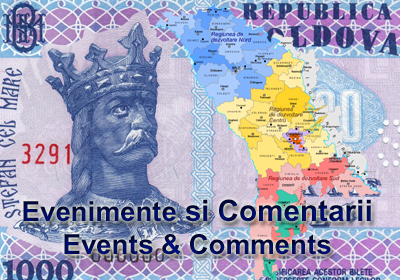
Moldova's GDP in the first quarter of 2021 amounted to 46.5 billion lei and increased by 1.8% in real terms, compared to the same period in 2020.
This was reported by the National Bureau of Statistics, noting that, taking into account seasonal adjustments, the gross domestic product increased by 0.1%. As noted in the NBS, the following types of economic activities contributed to the growth of Moldova's GDP in the first quarter of 2021: Extraction of minerals; manufacturing industry; production and supply of electricity and heat, gas, hot water; air conditioning; water supply; cleaning and treatment of waste and recovery work (+ 0.9%), gross value added (GVA) for the relevant activities increased by 6.1%, and their share in GDP was 15.7%; Construction (+ 0.4% contribution to GDP change) with a 6.7% share in GDP formation and an increase in GVA by 5.5%; Information and communication (+ 0.4% in GDP change), with a share of 6.8% in the formation of GDP and an increase in GVA by 6.5%; Real estate transactions (+ 0.4% in GDP change), with a share of 8.4% in the formation of GDP and an increase in GVA by 5%. At the same time, the evolution of GDP in January-March 2021 was negatively affected by: Agriculture, forestry and fisheries (-0.5% in GDP change), the gross value added of which decreased by 13.9%, and the share in GDP was 2.7%; Financial activity and insurance (-0.3% in GDP change) with a 4.3% share in the formation of GDP and a decrease in GVA for these types of activities by 7.4%; Professional, scientific and technical activities, administrative and auxiliary activities (-0.3% in GDP change), the GVA of which decreased by 8.3%, and the share in GDP was 3.1%; Public administration and defense; compulsory social insurance; education; healthcare and social assistance (-0.2% in the change in GDP) with a share of 14.5% in the formation of GDP and a decrease in GVA for the corresponding types of activity by 1.3%. Net taxes on products with a share of 15.1% in GDP contributed to GDP growth by 1.2%, and their volume increased by 8.6%. In terms of use, GDP growth was facilitated by: gross fixed capital formation (+ 2.9%), the volume of which increased by 14.2%, and its share in GDP was 23.4%; final consumption of households (+ 2.4% to GDP change), the volume of which increased by 2.8%, and its share in GDP was 82.9%. Herewith, net exports of goods and services (-8.2% to GDP change) had a negative impact on the GDP physical volume index due to an increase in the physical volume of imports of goods and services (+ 7.1%), along with a decrease in the volume of exports of goods and services (-12.3%). As previously reported, the IMF predicts that Moldova's GDP in 2021 will grow by 4.5%, and in 2022 it will increase by 4%. The World Bank expects GDP growth in Moldova in 2021 and in 2022 - at the level of 3.8% and 3.7%, respectively. As previously reported by the National Bureau of Statistics, Moldova's GDP in 2020 amounted to 206.35 billion lei and decreased by 7% compared to 2019. The budget of Moldova for 2021 was adjusted taking into account the economic growth projected for this year by 4.7% and inflation at 2.7%. Recently, macroeconomic forecasts were revised, and now the Ministry of Economy and Infrastructure expects real GDP growth in Moldova in 2021 to be 6%, in 2022 - 4.2%, and in the next two years - 4% each. It is expected that in nominal terms the volume of GDP in 2021 will amount to 227.7 billion lei, in 2022 - 248.8 billion lei, in 2023 - 271.3 billion lei, in 2024 - 292.8 billion lei. // 15.06.2021 — InfoMarket







